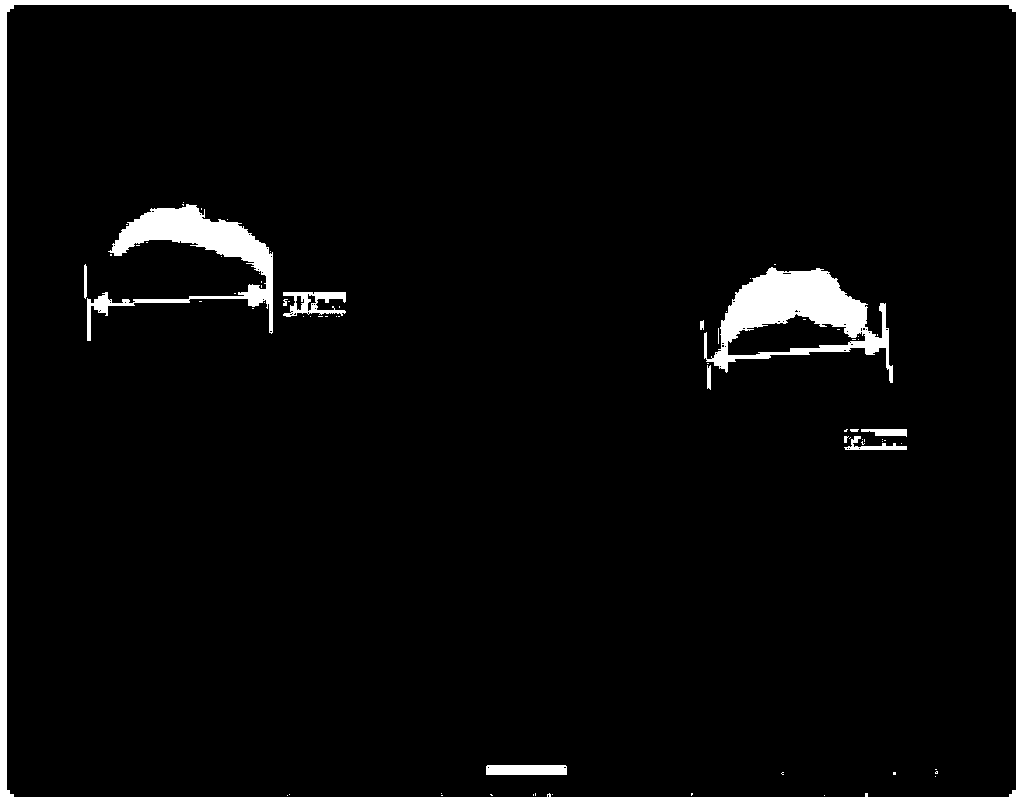Polypeptide, polypeptide-siRNA (ribonucleic acid) induction coassembly and application thereof
A co-assembly and multi-purpose technology, applied in the field of bioengineering, can solve the problems of high toxicity, cumbersome preparation and purification, and poor effect, and achieve the effect of simple synthesis, cumbersome preparation and purification, and increased positive charge
- Summary
- Abstract
- Description
- Claims
- Application Information
AI Technical Summary
Problems solved by technology
Method used
Image
Examples
Embodiment 1
[0039] Preparation and separation and purification steps of the polypeptide of embodiment 1:
[0040] According to the standard -Fmoc solid-phase peptide synthesis technology, MBHA resin is used to synthesize the peptide on the resin (taking the peptide Wpc as an example):
[0041]
[0042] The specific operation steps are:
[0043] (1) Polypeptide solid-phase synthesis: Weigh Rink amide MBHA resin into a peptide tube, add N,N-dimethylformamide (DMF), and swell with nitrogen gas for 40 minutes. Add 50% (v / v) morpholine in N,N-dimethylformamide (DMF) solution, blow nitrogen gas for 40 min, and remove the Fmoc protecting group. Wash the resin 3 times with DMF and DCM alternately, each time for 1min, mix the prepared Fmoc-AA-OH (5eq, 0.4M, DMF) solution, 6-chlorobenzotriazole-1,1,3,3- Tetramethyluronium hexafluorophosphate (HCTU) (4.9eq, 0.38M, DMF) solution and N,N-diisopropylethylamine (DIPEA) (7.0eq) were mixed and added to the resin and blown with nitrogen for 2h. The r...
Embodiment 2
[0047] Example 2 Polypeptides form co-assembled polypeptide-siRNA nanoparticles under the induction of siRNA (or other nucleic acid molecules)
[0048] Agarose gel retardation electrophoresis was used to determine the loading degree of peptides on siRNA. The amount of siRNA was 0.4 μg. The aqueous solution of peptides and siRNA were incubated at room temperature for 5 minutes to form stable peptide-siRNA co-assembled nanoparticles, the final 10 μg The polypeptide can be fully loaded with 0.4μg siRNA. The concentration of polypeptide was determined from the absorbance of Trp at 280 nm. ( figure 1 )
[0049] The co-assembled nanoparticles formed by the peptide and siRNA were characterized by atomic force microscopy (AFM), which proved that the peptide-siRNA formed regular and uniform nanoparticles. ( figure 2 )
[0050] The co-assembled nanoparticles formed by the peptide and siRNA were characterized by scanning electron microscopy (SEM), which proved that the peptide-siRN...
Embodiment 3
[0053] Example 3 Polypeptide-siRNA co-assembled nanoparticles can be used as a simple and low-toxic transfection reagent to effectively transfect siRNA into various cell lines and trigger RNAi effects
[0054] In order to verify whether the polypeptide-siRNA co-assembled nanoparticles can be used as siRNA carriers to carry siRNA, the most intuitive way is to use flow cytometry and laser confocal microscopy imaging to measure and observe the fluorescence of transfected cells in real time. Taking HeLa cells as a model and using flow cytometry, the polypeptide and fluorescently labeled (FAM) siRNA were incubated at room temperature for 5 minutes according to the ratio determined by agarose gel electrophoresis, and then added to HeLa cells pre-incubated with OPTi medium. After continuing to culture in the incubator for 4 hours, the cells were washed and digested, and the fluorescence intensity of the HeLa cells was detected by flow cytometry. It can be clearly seen that the fluore...
PUM
 Login to View More
Login to View More Abstract
Description
Claims
Application Information
 Login to View More
Login to View More - R&D Engineer
- R&D Manager
- IP Professional
- Industry Leading Data Capabilities
- Powerful AI technology
- Patent DNA Extraction
Browse by: Latest US Patents, China's latest patents, Technical Efficacy Thesaurus, Application Domain, Technology Topic, Popular Technical Reports.
© 2024 PatSnap. All rights reserved.Legal|Privacy policy|Modern Slavery Act Transparency Statement|Sitemap|About US| Contact US: help@patsnap.com










